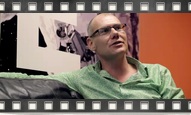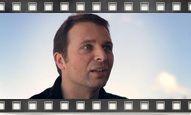2000: New utopia? Horrifying sham!
2000 was a terrible start to the new millennium for most of the world with the tech bubble finally popping – but in New Zealand we didn't fare so badly.
Track of the Year 2000

Subliminals - United State
How did this band not become a huge post rock phenomenon as big as the USA? That they make propulsive repetitive guitar music for the connoisseur might well be the reason. This song takes you on a concise instrumental journey. First past the drums on which the whole idea teeters, then in around behind the plonging bass and then right through the middle of the straight autonomic mechanical riffing of the guitars. More sounds are added, and the guitars change up a gear or two as the tension builds and then grinds to a sudden sprung halt. An altered but united state. - Roger Shepherd
[ Watch Video ]
Track of the Year by Records
The bubble bursts in the USA
Billions of dollars of investment in late '90s Internet ideas that were failing to show returns finally reached a head in March 2000. If only we had noticed sooner that ‘Information Superhighway’ was an anagram for ‘New utopia? Horrifying sham!’. As many saw their paper millions disappear in the dotcom crash, sites like ‘F*cked Company’ appeared to satirise and add some catharsis to one of Wall Street’s most dismal periods since the 1930s.
At home, our crash was relatively light by comparison. Perhaps because we were a few years behind the curve, our dot.co.nz that flew closest to the sun, Flying Pig, didn't plummet until 2001.
Quiet arrival of bubble 2.0 technology
2000 was a dark year for online businesses but, on the technology front, it saw the quiet arrival of two key technologies to web browsers that would spur the second Internet bubble – one that was yet to pop – Web 2.0. These technologies had been around on paper for some time, but in 2000 they were implemented in the major browsers.
CSS would make web pages appear radically different and more magazine-like in the Internet’s second decade. And a minor function of Internet Explorer 5 – XMLHTTP – would eventually be uncovered and used by cunning web coders to create web pages that worked more like desktop applications.
New Zealand’s ISP bubble pops
New Zealand was not totally isolated from the crash. In 2000, around 20 of our ISPs were either acquired or went out of business. Competition between the big ISPs and the several ‘free access’ ISPs was driving the price from around $40/month for flat-rate to $25 by the end of the year making it an unprofitable market for many businesses. High profile ISP Ihug is forced to abandon is initial public offering (the holy grail of financial windfall strategies for technology companies during the bubble) and lays off 60 staff by the year’s end.
This price war was better news for consumers of course. From a late start, Xtra had now come to dominate - with 42 percent of the market, providing an easy and affordable onramp to the Internet for those who were becoming known as ‘late adopters’.
We fall in love with cellphones
Where one technology seemingly peaked with the burst of the Internet bubble, another came into its own. Since the late ‘80s, mobile technology in New Zealand had evolved in parallel to the Internet. Bell South New Zealand – which eventually became Vodafone – had launched off the back of Radio Spectrum purchased in 1989. By the end of 2000, more than 41 percent of New Zealanders owned a mobile phone, Telecom announcing that it had a million customers on the network.
Early on, brick handsets and the yuppie image had made mobiles more visible than the Internet. Then, in the late ‘90s, the race for ever smaller handsets seemed to herald an end to technology improvements in favour of looks.
That is until people started discovering the hidden non-calling functionality on their handsets, such as TXTing and then WAP. The size of handsets went in reverse, starting to increase to accommodate these features in a more comfortable way. In November 1999, less than 60,000 text messages a day were sent through Vodafone’s network. Four years later, it was 1.8 million.
Arrival of the mobile-ish web
In 1999, the film The Matrix had been as huge a hit in New Zealand as it was in the rest of the world. The marketing halo was still fresh enough to make the Nokia 7110 handset, designed to look like lead character Neo's phone, a very popular choice after its NZ release in 2000. What some purely fashion-conscious purchasers didn't realise was that they were holding the world's very first WAP phone. Wireless Access Protocol (WAP) allowed for the access of a web-like experience – or at least basic access to email and display of types of pages that harked back to 1994. If such pages had been viewed on a postage stamp-sized screen.

Government websites fail to comply with guidelines
Despite firm guidelines, many government departments refuse to work together on standards and a common look and feel for their 52 websites. They make arbitrary decisions until Cabinet is forced to intervene.
Vodafone, still the scrappy underdog to Telecom's Goliath in the mobile world, had the advantage of a digital GSM network that was used to launch WAP access in May 2000. Only four weeks later, the NZ Herald launched a WAP version of its site giving access to headlines and a variety of news feeds to mobile handsets. It was a revelation for the busy businessman who needed to stay in touch – even though the cramped screens, costs and overall lack of content were to keep WAP a niche technology for the next decade. The Internet mostly remained off of our mobile devices until handsets like the iPhone became capable of viewing full websites years later, and WAP was rendered unnecessary.
Telecom would launch its new CDMA network in 2001 giving its customers WAP access with new handsets. A partnership with Norwegian firm Telenor to deliver mobile Internet services through its djuice brand would eventually be successful – but with the project delayed, it would take some no. 8 wire and a skunkworks project at Telecom to launch its first WAP server. As it had been since the beginning of our Internet - kiwi ingenuity came to the rescue.
What were your
Kiwi Websites of the Year?

UpdateFu [b.2000]
Before RSS took off UpdateFu allowed people who followed online personal journals to check when their favourites were updated, instead of having to visit every site individually. Its tagline was, "We stalk so you don't have to." [ View Site ]
Tomorrow: What finally made geek sexy and which set of flatmates were we spying on in the spa?
Further Reading
Flying Pig story E-government Unit Flying pig closes Vodafone launches WAP Herald launches WAP siteAll
Anecdote
Event



